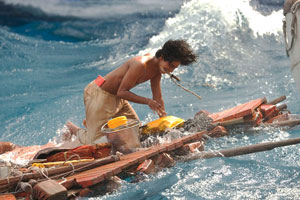 |
When Ang Lee graduated from film school he struggled to make a film, and no one would give him a chance. Only with his trilogy on Taiwanese culture, Pushing Hands (1992), The Wedding Banquet (1993), and Eat Drink Man Woman (1994) did he manage to gain the kind of attention he deserves. All three films are delightful, insightful dramas about Taiwanese people seeking to adapt to the world changing around their traditional values.
So, it was even more surprising when Lee then leapt into adapting Jane Austen's Sense and Sensibility the very next year in 1995, which also won an Oscar for 'Best Adapted Screenplay'.
This astonishingly fine adaptation is even more of a shocker when Lee admitted, that while making it, his English language skills were far from good. Due credit must be given to the wonderful Emma Thompson who adapted the screenplay and starred in the film as Eleanor, the older, sensible sister, but ultimately it is Lee's direction that carries this elegant and beautifully shot film. Since then, Ang Lee has changed genre and style with almost every film, an admirable and awe-inspiring feat for any director.
Before tackling the intimidating task of adapting the tricky structure of The Life of Pi, a novel by Yann Martel, Ang Lee had also already produced the ravishing epic Crouching Tiger, Hidden Dragon (2000), Brokeback Mountain (2005) - a gay love story about two cowboys, and the still more controversial but absolutely entrancing Lust, Caution (2007).
So, it was with some trepidation that I approached watching The Life of Pi, that too, in 3D (not my favourite form). While I still maintain that the film could have been a wee bit shorter - it is 127 minutes long - I cannot help but wax poetic about the sheer visual beauty of Claudio Miranda's cinematography. Yes, a great deal of it was computer generated, yet even from the opening credits which show scenes of the animals at the zoo run by Pi's father, it is clear that Miranda is supremely gifted in what he does.
I will not say very much about the story, and I will leave it up to you to watch the film so that you might know the whimsical anecdote behind why an Indian boy from Pondicherry is called Pi.
The film version is always an entirely different entity from the novel, and it is always disappointing to compare the two very disparate forms. However, for those who have not yet read the novel, I would not recommend rushing to do so before seeing the film. That way, it might come across as even more surprising and delightful.
Watch the film, take your children, and remember to cover their ears when Richard Parker roars.


